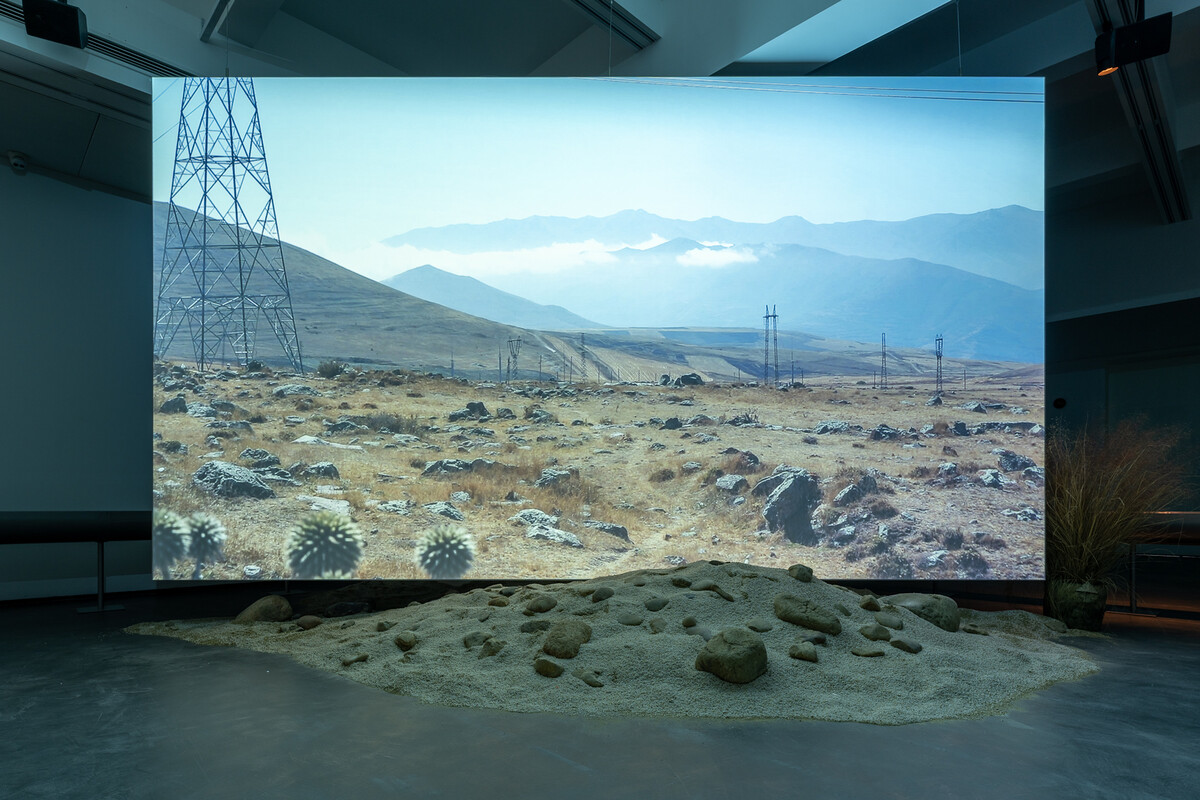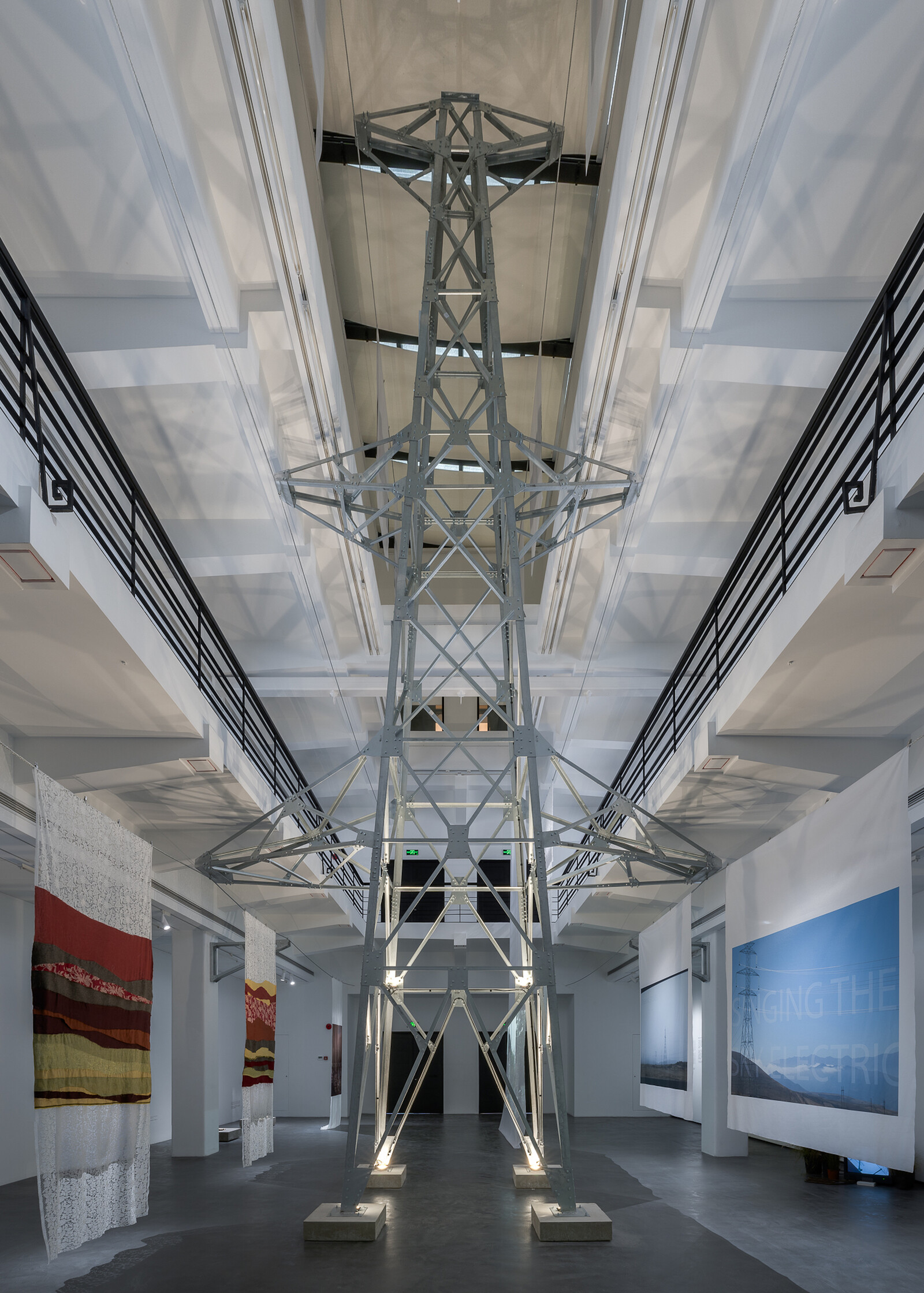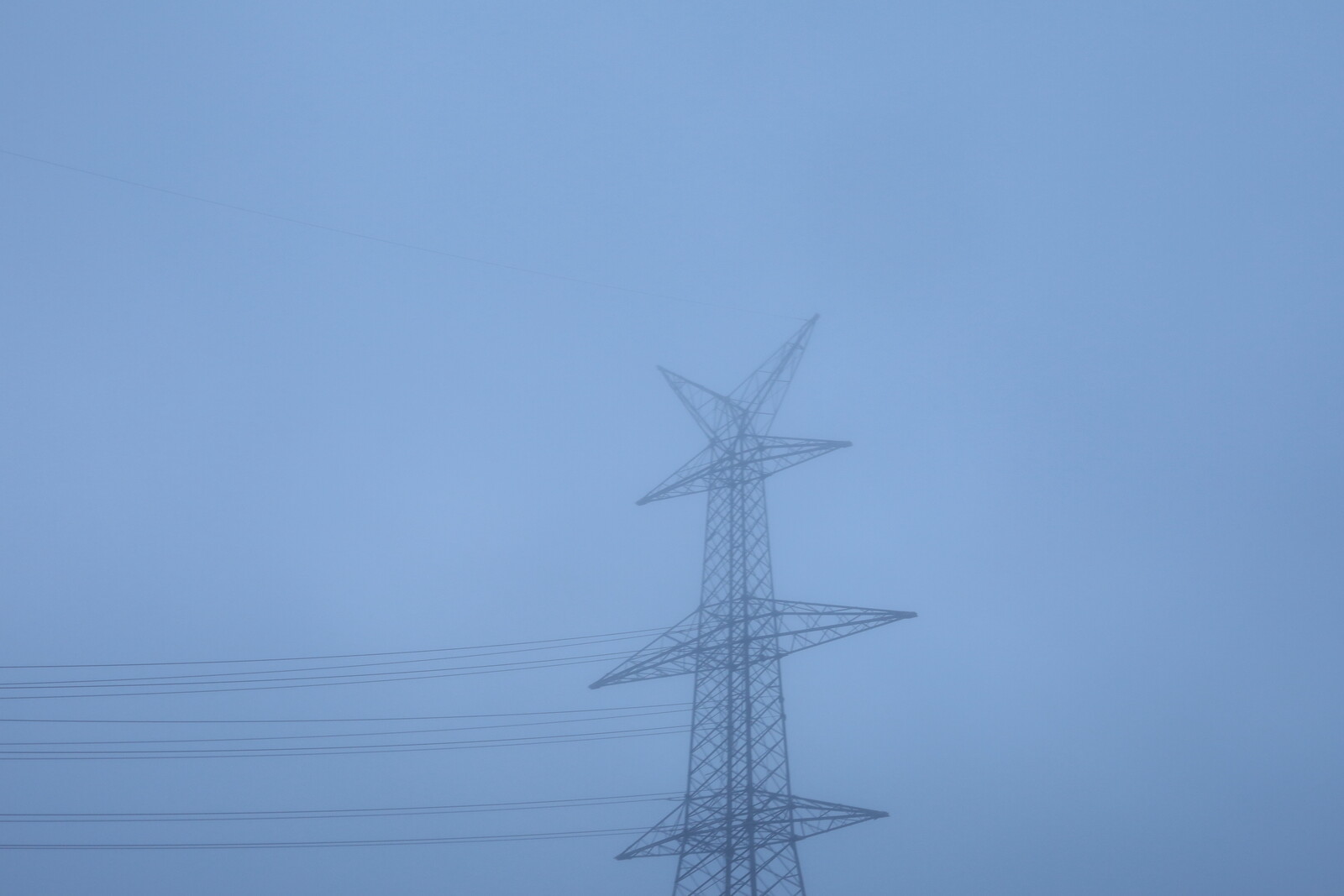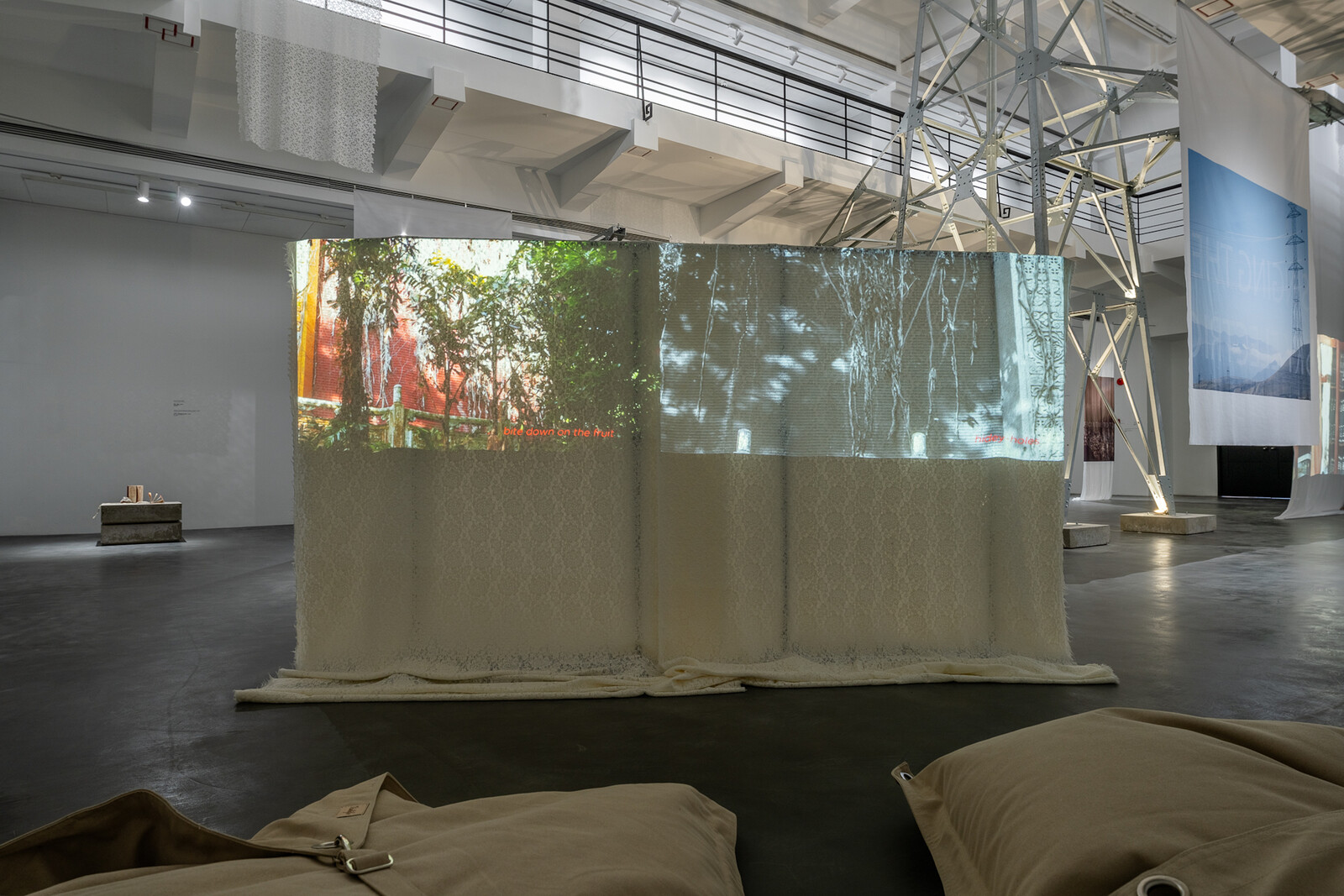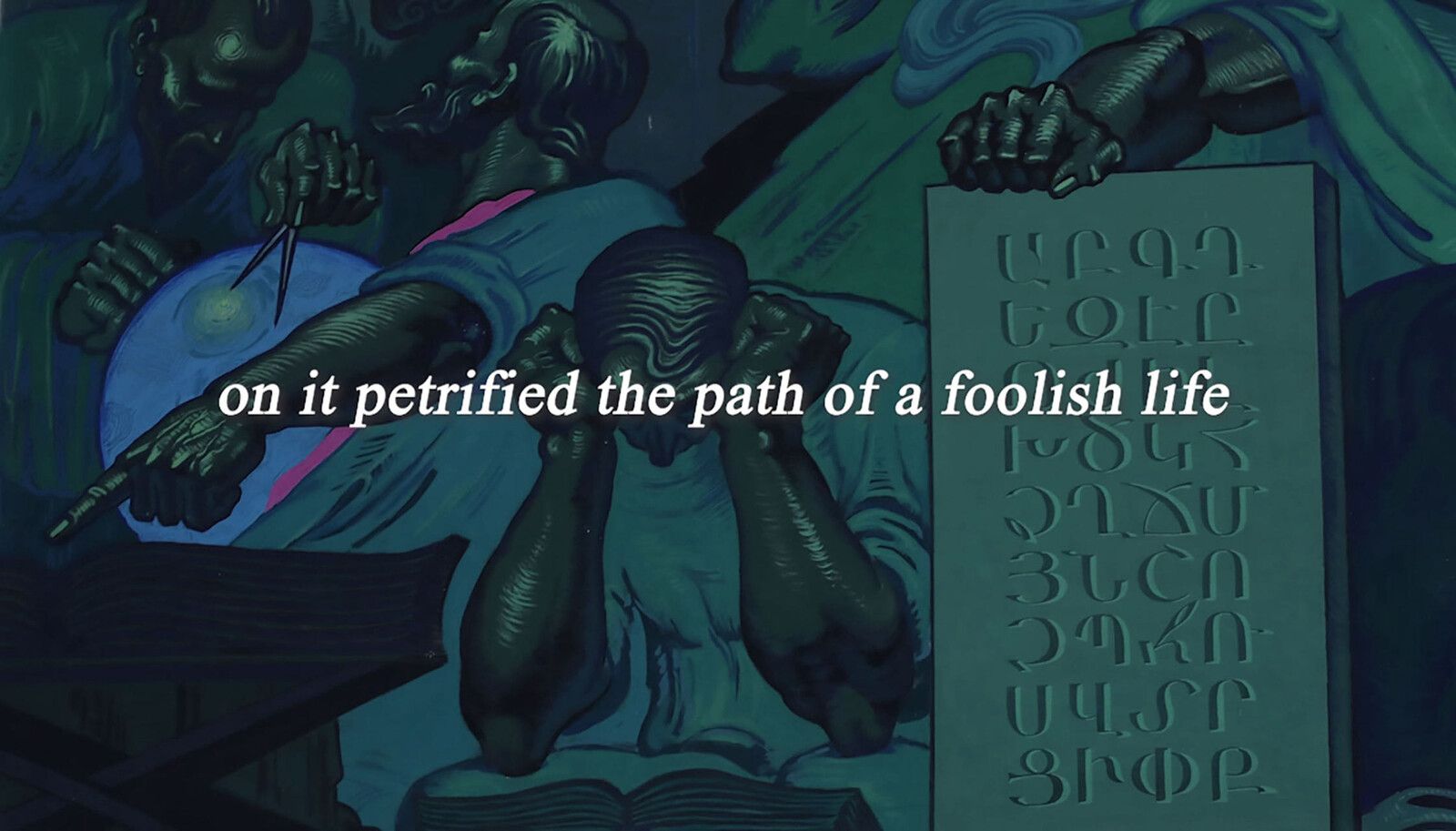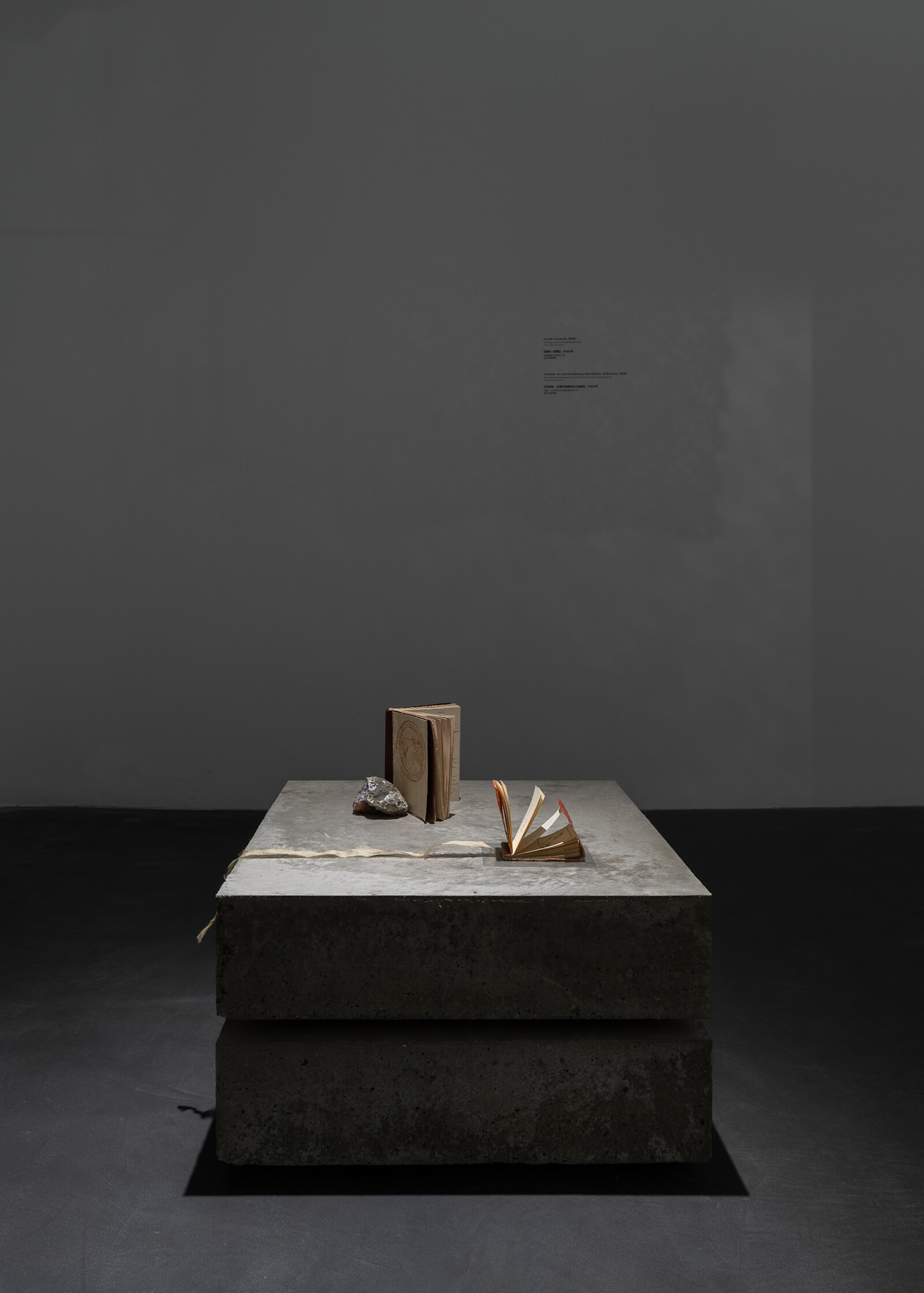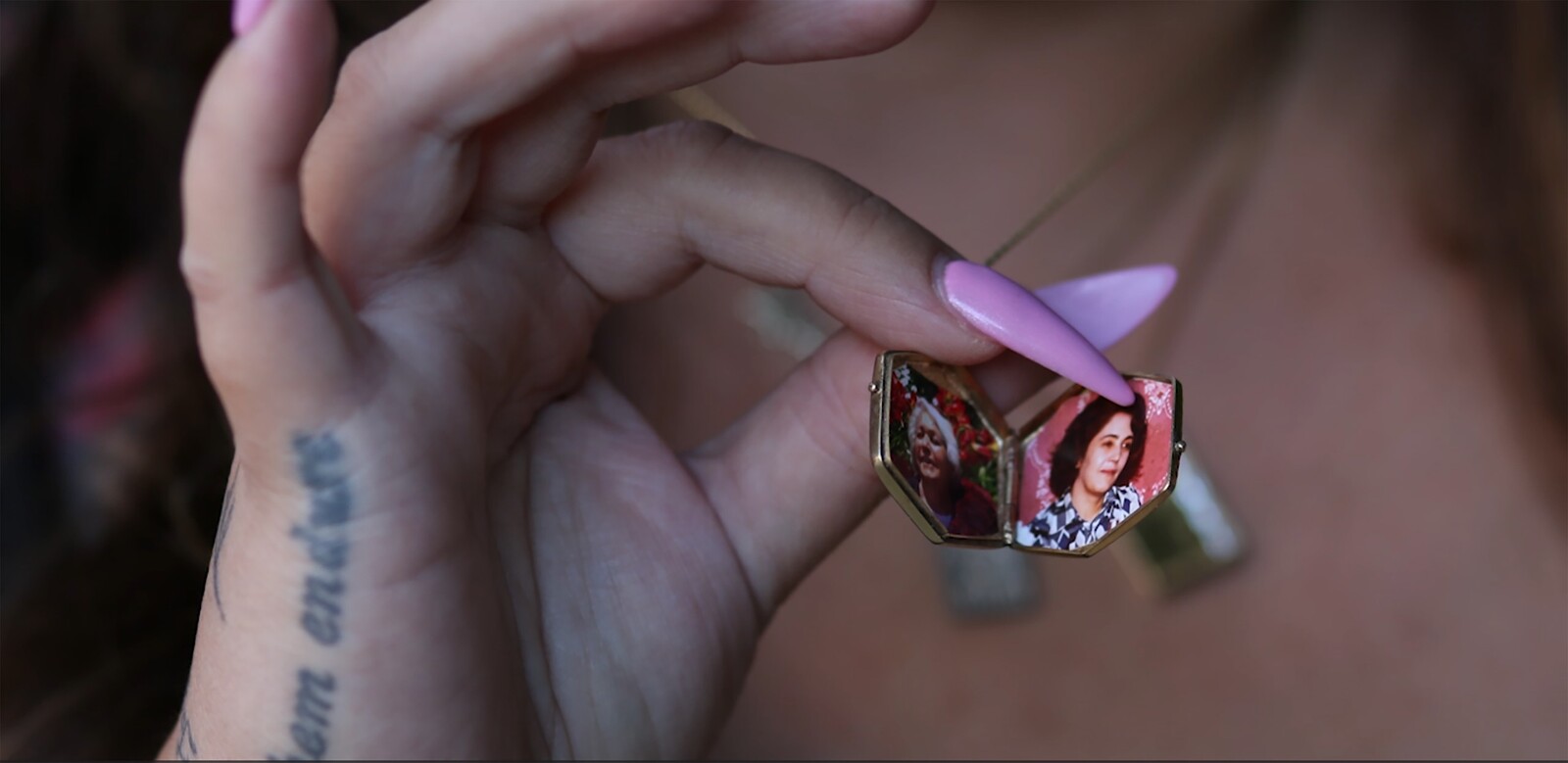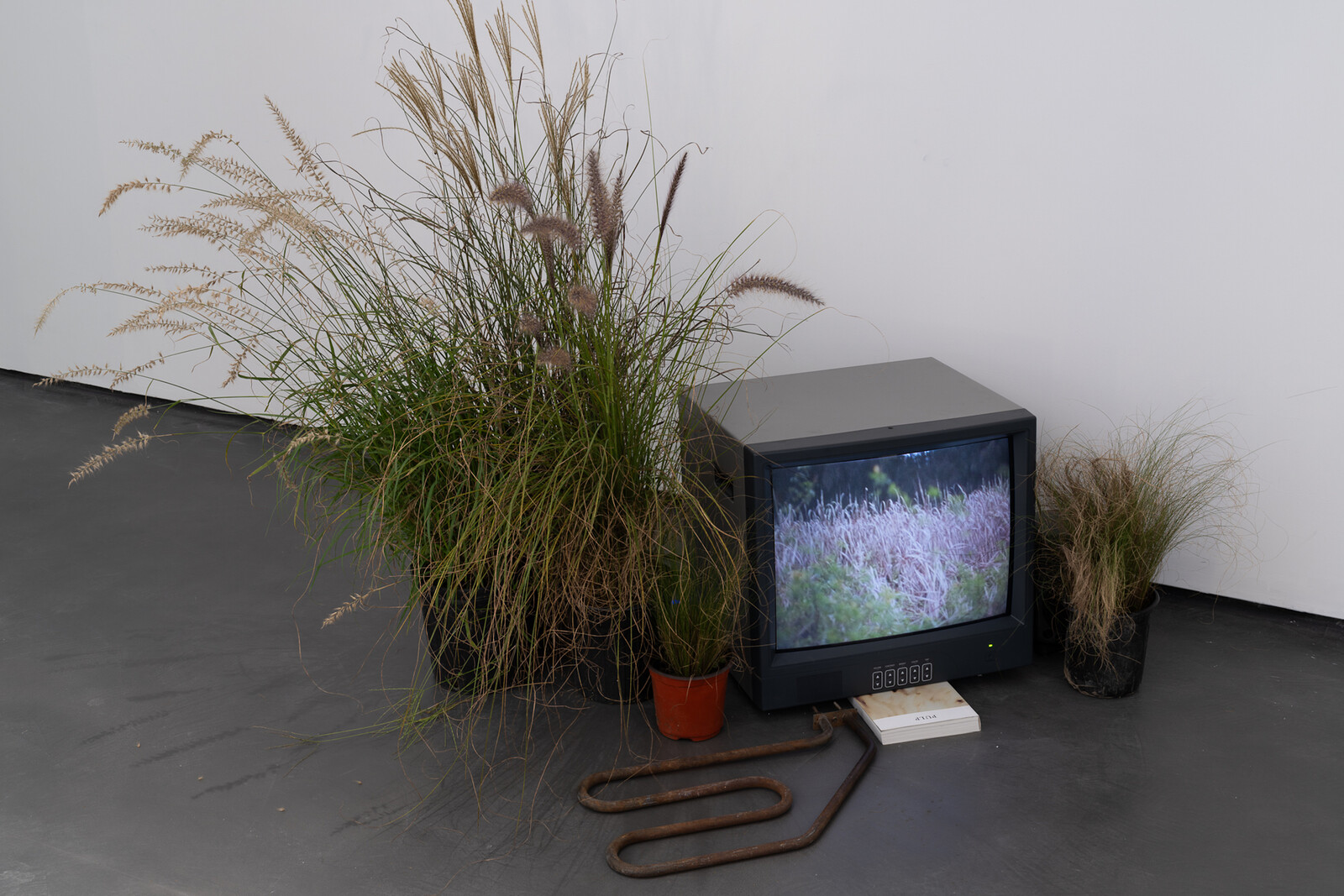In Shubigi Rao’s new film These Petrified Paths (2023), censorship is always tied to the threat of repressive territorialization. Early on, we are introduced to a “former professor of Russian literature, now beekeeper on the side of the road to Daliyan” in Turkey, who embodies a theme of the exhibition at large: how a struggle over literature and written culture has led to a fight over ecology, terrain, and the right to live freely on one’s Indigenous land. In the film, this process is inflected by the historical function of Armenian literature as a tool of nation-building, forging claims to place for a people often on the verge of statelessness. As one featured subject remarks of the region’s history, the Armenian genocide is also “cultural genocide.”
These Petrified Paths details (among other threads) the lengths to which Armenian intellectuals have gone to preserve their heritage: one participant describes how an elder member of the community buried his books in the ground, with the intent that they be dug up only upon the retreat of repressive state forces. Toward the end of the film, an interlocutor alludes pessimistically to the contemporary Armenian government’s attempts to “sell off” part of the country for further protection. These efforts, she concludes, have ultimately only increased external intervention. Looming over the film’s past and present personae is a hostile sort of “cultivation”: both authoritarian diktats decreeing the illegitimacy of local knowledge (cultivation as epistemic violence) and a more literal possible annexation, engineered by external powers.
The exhibition carefully shelters Rao’s film. There is a hushed tenor to its third-floor screening gallery: sacral, slightly dimmed lighting makes the room feel more meditative than a simple black box might; photographs by the public are institutionally barred. A mounted band of oil-like material lines the perimeter of the gallery. The protectiveness the presentation evinces towards this work and Rao’s Armenian discussants initially appears dissonant with the rest of the project. One floor above, the cautious shielding of These Petrified Paths unravels in the presence of a large pylon sculpture modeling a transmission tower for electricity, Of that colossal wreck (2023), which occupies most of the museum’s three-story atrium. One installation on this next level, Linear AyB (2023), shows short segments of footage similar to These Petrified Paths, besieged by digital alterations that flatten scenes into abstract patterns of color.
The film on show in the screening gallery, and that space’s curatorial allusions to “subterranean tunneling,” appears in the above floors as so much vegetable or mineral matter that will be mined, fracked, and dispersed by power. In Linear AyB, a literal depiction of electric power—here, a distortion of film footage that mimes a process of transmission or data storage—appears to sift through scenes featuring books or maps. Periodically, the color in the footage drips down vertically until the film, and the pages on screen, look as if they’ve been put through a shredder. The images appear both rinsed and sliced in pieces. They’ve become cinematic pulp.
One new work, Landfill (2023), features books and found objects placed on low pedestals, at a height that frustrates reading. Styled neatly but reduced to a kind of tomb-like appearance along the outer edge of the gallery, one has to squat to see small sketches in the handmade books. They are flanked by geological matter that has an air of recovered flotsam, including what seem like one-piece residues of larger machines, which have a maritime feel. Landfill includes the only whole, tangible books in the show, but they remain sculptural, their texts unreadable.
If the relationship between power and extraction in These Petrified Paths seemed at first to be primarily iconographic—signaled by the huge Of that colossal wreck looming over Rao’s new and past works—the project gradually reveals linguistic and material traces of power’s elusive influence. Hanging from various heights in the central atrium, the three-story gallery also features Watermarks (2023). Its long pieces of fabric are entirely white apart from areas with projections or still images that feature motifs of pylons and cryptic, dimly legible slogans about electricity and extraction. “Singing the sky electric;” “This circuitree sings / of oil and death.” Here, power has even absorbed recognizable quotations (Whitman’s “I sing the body electric”), muddying existing texts with its own imperatives.
These final three floors expand the exhibition’s focus beyond the Armenian subject matter of its title film to reflect on the broader links between land grabs and literature. A gripping 2019 work, The Yellow Scarf, deals with the colonial presence in India in relation to forests of the so-called “strangler tree.” Some of Rao’s 2013 work on paper series “Useful Fictions” is presented, as well as pages from a group of artist books. Rao’s petite books here are shown as single pages, as if dispersed into the gallery space (perhaps, in that way, also neutralized). Elsewhere in Rao’s works on paper, a sketchy and offhand style injects itself into elevated typographic frameworks—acerbic political quips wryly upend the scholastic demureness of handwritten cursive and meticulous phylogenetic trees. Rao’s wayward lines and graphic interjections manifest as geopolitical figures throughout the show. Two pages from a series of works on paper feature a territory-like watermark; on the first, the area is blacked out with ink so that the embossing is visible in relief. In the second, the same region remains blank, visible only as a faint imprint on the paper. Handwritten captions on the respective pages read: “we drove through Arcadia” / “but we didn’t find it”.
These Petrified Paths puts power (literally) at its center to examine what occurs when extractive energies prey on the written word, and identifies struggles over property lurking behind the suppression of speech. The potential for geopolitical aggressors to forge a propagandistic language of extraction, here, is envisioned not as direct production of text but as the rippling of power through written material it has annexed from other sources. These Petrified Paths aims simultaneously to model an expression of land- and identity-construction through books and to model power’s destruction of those literary potentials. It can at times appear at war with itself. Yet, at its best, this tension is in keeping with the exhibition’s overall emphasis. It exemplifies a generative force of textual culture that both attracts and disperses power of all kinds. As an ironic Watermark puts it: “We have the worst taste in friends.”
